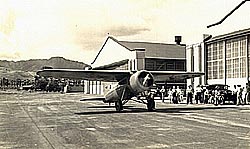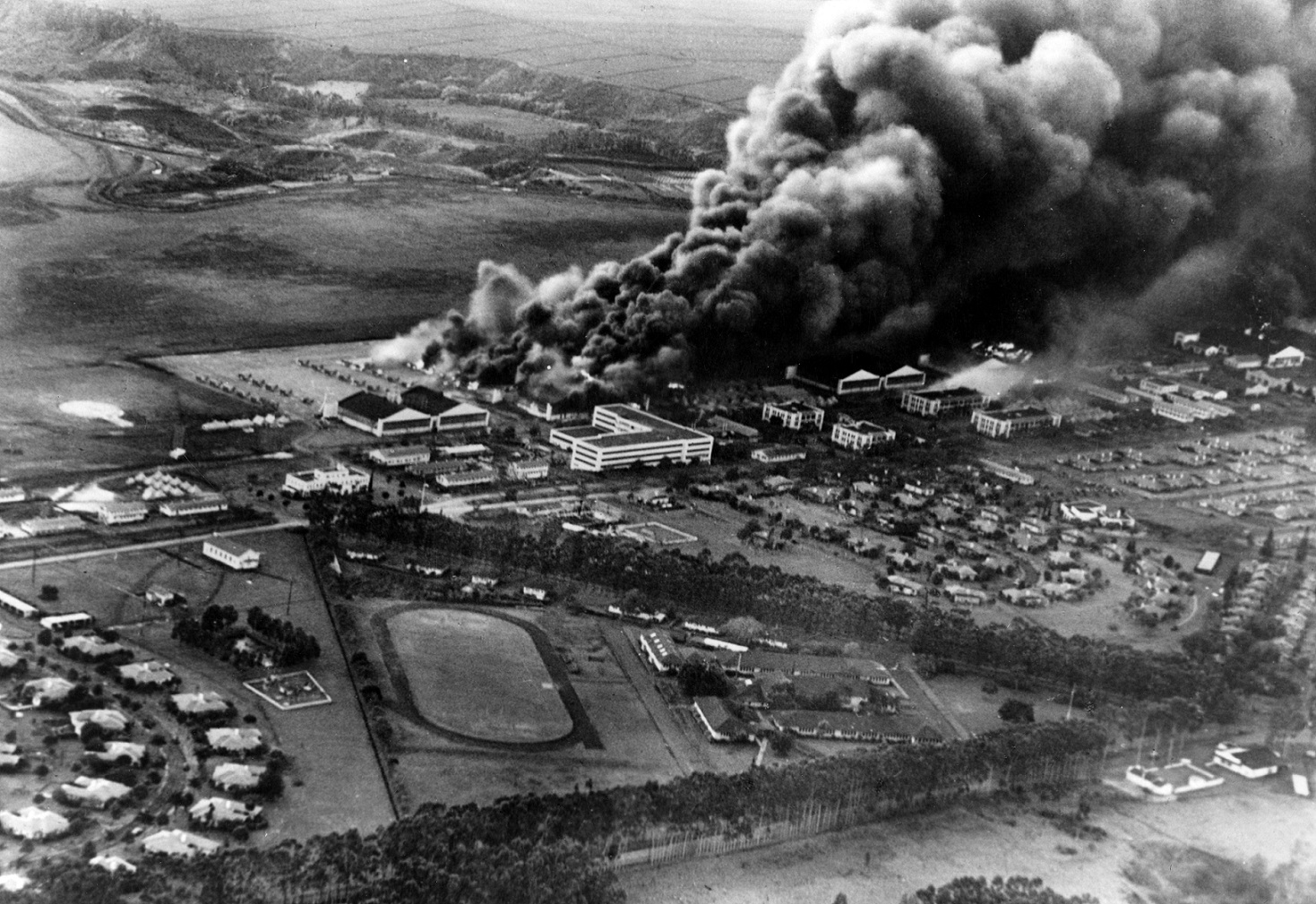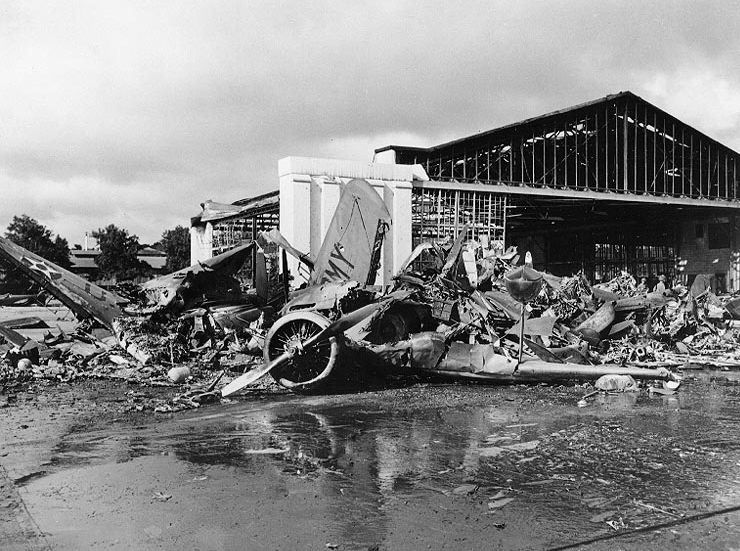Wheeler Army Airfield Played a Significant Role in World War II Events
Wheeler Army Airfield in central O’ahu was established in 1922 by a small detachment of men from Luke Field at Ford Island. This working party cleared the area of weeds, guava, and algaroba trees, built housing, and erected two canvas hangers in the flying field. The area was officially christened Wheeler Field on November 11, after the late commander of Luke Field, Major Sheldon H. Wheeler, who was killed when his plane crashed on Ford Island the previous year. In June 1923, oil storage tanks, a new flying field, shop hangers, and new airplane hangars were all constructed. ln 1930 the first permanent structures were erected.
Due to Hawai‘i’s year-round climate, Wheeler Field was a popular area for aviation training. During the pre-World War II era, Wheeler Field witnessed multiple historic events. Several “firsts” in flight history occurred here. These included the 1927 first mainland-to-Hawai‘i nonstop flight; the 1928 trans-pacific flight from Australia to the United States; a 1927 nonstop flight from Oakland, California to Wheeler and in 1935, Amelia Earhart’s departure on the first solo flight between Hawaii and California, the first of several subsequent visits by the famed female pilot. Kingsford Smith, in his plane the Southern Cross, used the airfield on his historic flights across the Pacific.

Amelia Earhart’s airplane, the Vega, at Wheeler Field as she prepares for her Oahu to Oakland flight in January 1935 Photo courtesy of http://americahurrah.com
Just years before United States involvement in World War II, Wheeler Field had transitioned into the primary base for Army Air Corps pursuit aircraft, the first generation of real fighter planes. This garrison of aircraft was tasked with patrolling the skies around the Island and its air defense.
During the first wave of the Japanese attack on Pearl Harbor on December 7, 1941, 25 Japanese dive-bombers dropped approximately 35 bombs on the hangars at Wheeler Field. The planes returned to strafe the flight line, turning it into a river of fire. Four fighters were able to take to the air and attack the Japanese over southeastern Oahu. A second Japanese wave arrived and strafed the field. Eighty-three aircraft had been destroyed, 38 enlisted men killed, and 59 wounded. Yet Wheeler Field quickly recovered and played an important role in World War II. In Fall 1944 Wheeler provided service and support for the B-29 bombers in the Marianas which began massive air raids against Japan.
When the United States Air Force was established as a separate service in 1947, Wheeler Field was re-designated as Wheeler Air Force Base and command turned over to the newly formed Department of the Air Force. Placed in care-taking status in 1949, Wheeler Field was reactivated during the Korean War. And in the 1950’s, 60’s, and 70’s, Wheeler Air Force Base became home to several logistical and support units, supplying all munitions, maintenance, and logistical support to Air Force activities and missions in the Hawaiian Islands area.
In August 1987, the Secretary of the Interior designated Wheeler Field as a National Historic Landmark, recognizing it as a site of national significance in the history of the United States and, in particular, World War II in the Pacific. The 1941 flightline, hangars, and barracks survive today. Wheeler Air Force Base was constructed in the pattern of the Garden City. This type of neighborhood is the inspiration of Sir Ebenezer Howard, who designed them in England in reaction to the industrial company towns that had blighted his nation. The neighborhoods are designed in loops with ample green spaces to be shared in common among the residents. The homes within the loops are of the Spanish Colonial Revival style which flourished in the 1920s and 1930s at the time they were first built.
On October 31 1991, command of the installation was turned back to the Department of the Army, in an exchange of Wheeler Air Force Base for Fort Kamehameha Military Reservation, and the name was changed to Wheeler Army Airfield.
The primary mission of Wheeler Army Airfield in the 21st century remains to provide operational support and aerial combat units in the Asia-Pacific area of command, in addition to serving as the command center for U.S. Army Garrison Hawaii.
The 1o0th anniversary of Wheeler Army Air Field was commemorated at the 2022 Preservation Honor Awards Ceremony and Reception on October 20, 2022.
Photo captions:
Above left: Wheeler Field Plan, October 1941.
Above center: December 7, 1941 – Wheeler Field, Hawai‘i – Planes and hangars burning at Wheeler Army Base during the Japanese attack on Pearl Harbor, Hawaii, Dec. 7, 1941. (Photo Credit: Courtesy U.S. Navy)
Above right: U.S. Army Air Forces aircraft destroyed by Japanese raiders at Wheeler Air Field. Photographed later in the day on 7 December 1941, following the end of the attacks. The wreckage includes at least one Curtiss P-40 and a twin-engine Douglas Dolphin amphibian. Note the wrecked hangar in the background. Official U.S. Navy photograph 80-G-32896 Wikimedia Commons
Further Resources:
Wheeler Army Airfield: https://aviation.hawaii.gov/airfields-airports/oahu/wheeler-field/
Wheeler Army Airfield: Then and Now: https://pearlharbor.org/wheeler-field-then-and-now/





